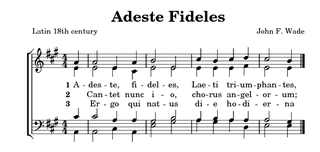 W
WByzantine music is the music of the Byzantine Empire. Originally it consisted of songs and hymns composed to Greek texts used for courtly ceremonials, during festivals, or as paraliturgical and liturgical music. The ecclesiastical forms of Byzantine music are the best known forms today, because different Orthodox traditions still identify with the heritage of Byzantine music, when their cantors sing monodic chant out of the traditional chant books such as the Sticherarion, which in fact consisted of five books, and the Irmologion.
 W
WChurch music is music written for performance in church, or any musical setting of ecclesiastical liturgy, or music set to words expressing propositions of a sacred nature, such as a hymn.
 W
WContemporary Christian music is a genre of modern popular music which is lyrically focused on matters concerned with the Christian faith. It formed as those affected by the 1960s Jesus movement revival began to express themselves in a more contemporary style of music than the hymns, Gospel and Southern gospel music that was prevalent in the church at the time. Today, the term is typically used to refer to pop, rock, or praise & worship styles.
 W
WA hymn is a type of song, usually religious, specifically written for the purpose of adoration or prayer, and typically addressed to a deity or deities, or to a prominent figure or personification. The word hymn derives from Greek ὕμνος (hymnos), which means "a song of praise". A writer of hymns is known as a hymnist. The singing or composition of hymns is called hymnody. Collections of hymns are known as hymnals or hymn books. Hymns may or may not include instrumental accompaniment.
 W
WA hymn tune is the melody of a musical composition to which a hymn text is sung. Musically speaking, a hymn is generally understood to have four-part harmony, a fast harmonic rhythm, and no refrain or chorus.
 W
WSacred Harp singing is a tradition of sacred choral music that originated in New England and was later perpetuated and carried on in the American South of the United States. The name is derived from The Sacred Harp, a ubiquitous and historically important tunebook printed in shape notes. The work was first published in 1844 and has reappeared in multiple editions ever since. Sacred Harp music represents one branch of an older tradition of American music that developed over the period 1770 to 1820 from roots in New England, with a significant, related development under the influence of "revival" services around the 1840s. This music was included in, and became profoundly associated with, books using the shape note style of notation popular in America in the 18th and early 19th centuries.
 W
WShape notes are a musical notation designed to facilitate congregational and social singing. The notation, introduced in late 18th century England, became a popular teaching device in American singing schools. Shapes were added to the noteheads in written music to help singers find pitches within major and minor scales without the use of more complex information found in key signatures on the staff.
 W
WWest gallery music, also known as Georgian psalmody, refers to the sacred music sung and played in English parish churches, as well as nonconformist chapels, from 1700 to around 1850. In the late 1980s, west gallery music experienced a revival and is now sung by several west gallery "quires" (choirs).